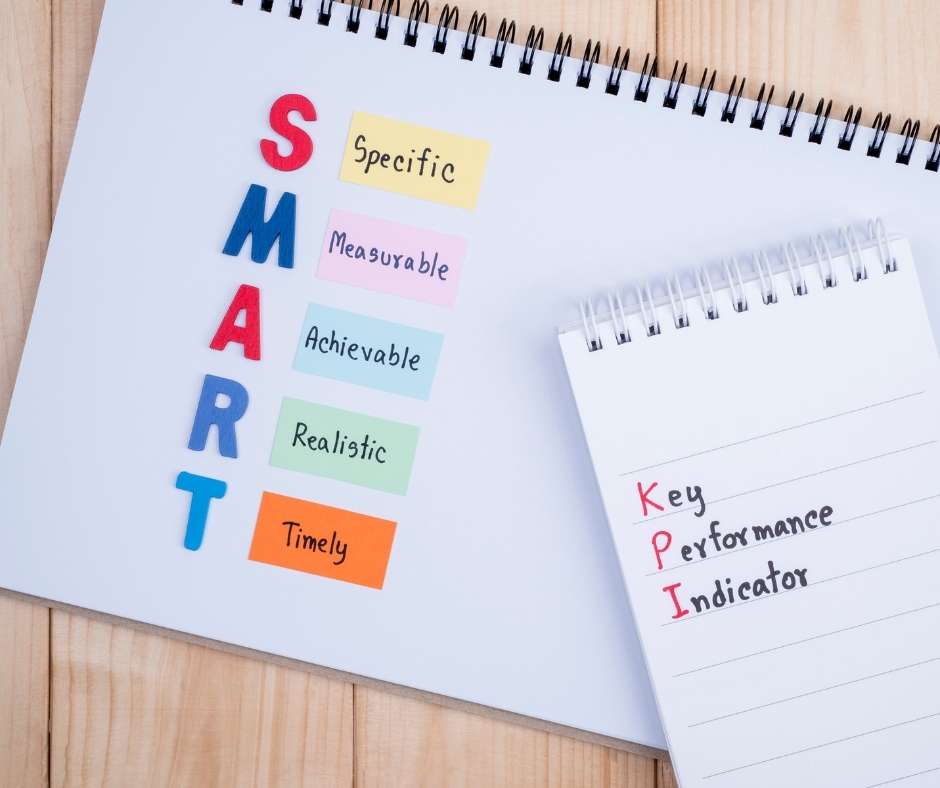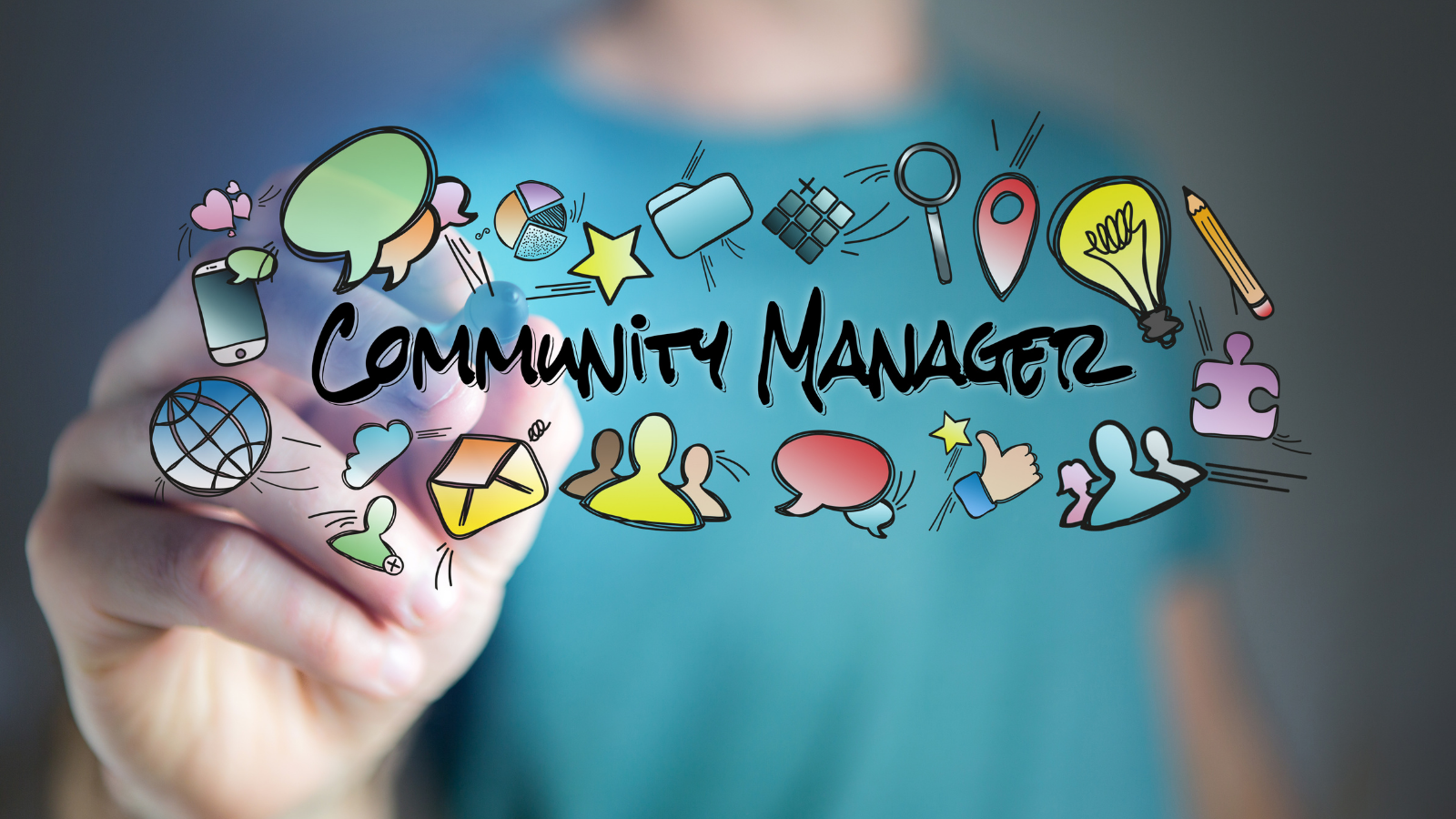
Being able to measure, manage and act on your results is one of the main perks that digital marketing has compared to the more traditional model. The key aspect here is KPIs – key performance indicators – which we can define as a metric that measures how businesses set and achieve their goals.
These KPIs are essential in any digital marketing strategy, so it’s crucial to carefully choose objectives and their respective metrics as part of your digital marketing strategy. In essence, KPIs are the information about whether (and how) your work is paying off.
The trick is how to determine if the goals and KPIs you’ve selected are the correct ones. How do you know? They are sometimes called SMART goals: Specific, Measurable, Achievable, Relevant and Time-Bound.
Occasionally, the concepts of objectives and KPIs get confused, leading to poor and chaotic results. While your goals need to be SMART, your KPIs need to be effective and describe your data correctly. Another common misunderstanding is the word KPI and metric being used interchangeably.
What’s the difference between KPIs and metrics?
KPIs and metrics are not exactly synonymous.
Metrics are the measurements you record to track the success or the failure of your business activity. We use them to measure the performance of daily objectives that may or may not be crucial to the development of your business.
That doesn’t mean that they can’t provide valuable information. We use them mostly at an operational and tactical level to provide data from specific perspectives.

KPIs on the other hand are the measures that have the most impact on moving your organization forward. In short, they define your strategy. They determine performance over time, show if goals are being met, and analyze whether changes are necessary.
In the world of social media, for example, it’s easy to see how many followers you have, what posts people like and how many comments your audience is posting. However, knowing the level of engagement or your conversion rate is more difficult to discern. (If you want to know more about social media, see our dedicated article on the subject).
Here’s where social media KPIs come into play, as they help show the effects of your actions and whether your marketing strategy is successful or not.
What are the main social media KPIs?
Let’s organize social media KPIs into 3 main groups depending on your goals:
- Engagement
- Reach
- Conversions
Once you know exactly what you want to achieve, you need to make sure to use the right KPIs and metrics that best reflect your desired results. Even though all KPIs are helpful in different ways, not all of them reflect the actual information you are looking for. So think well before choosing.
1. Social media KPIs for reach
Reach is the amount of users who come across your social media accounts and posts. You can determine that with the following metrics:

➞ Follower count
This is an essential KPI to track and probably the easiest, too. It tells you how many accounts are following your brand.
While your number of followers might sometimes be a misleading metric, the rate at which it increases or decreases can reveal a lot of information about the state of the account and its level of growth.
➞ Impressions
Impressions indicate how many times your post has been seen. This metric is often mistaken with the term reach, which measures the number of unique users.
In the case of impressions, you need to keep in mind that this KPI only indicates the total of all the views. If someone sees your post more than once, this will be counted as a new view. That’s why you could have, for instance, 3.000 views of a post and 3.500 impressions at the same time.
➞ Post reach
This KPI indicates the number of unique accounts that have seen your post and, therefore, those that could potentially interact in different ways with it, for example by following your account. This is why you can say that there is no engagement without reach.
This metric can be considered one of the most helpful in terms of content marketing, as it allows you to see what kind of posts are the most or least popular. You can calculate post reach like this:
Post Views / Total Followers x 100 = Post Reach %
➞ Web Traffic
This is another of the most essential KPIs, as it indicates how your posts with links to a website are performing.
Web Traffic shows how many times someone clicked from your social media to get to your brand or business website. This can help determine if the content you are posting on social media is working properly and if your web traffic reflects the social media content you’re creating.
2. Social media KPIs for engagement
We consider engagement as the number of people who interact with your posts in a positive way. It can help you answer questions about how your audience interacts with you, if they like your posts or if they’re sharing them with others.
If your level of engagement is low, it means that your social media strategy is not working as well as you hoped and that you need to make some tweaks.
➞ Likes
This is an easy-to-track but fundamental KPI. “Favorites” and “likes” indicate that your fans and your possible new followers are enjoying your post and interacting with it. It’s true that there are more accurate ways to determine your engagement, but still, good-old likes never go out of style!
➞ Clicks
Another basic but essential KPI. In digital marketing and specifically in social media, clicks are the most basic way of obtaining data. They can show the level of interest your audience has in your posts. You can measure clicks in different situations, such as a click on a link to your website, the expansion of an Instagram caption or a tap on a tweet.
➞ Shares
Shares are an excellent way to measure engagement and provide higher-quality information than traditional likes. If someone shares your post, it means that your content is so interesting that they feel the need to ‘spread the message’. And that’s great!
➞ Mentions
This KPI is a great way to know if someone is talking about your brand and if you’re part of a conversation. Mentions happen when another account tags your business in a post, a comment or a story.
➞ Comments
If someone comments on your post with a positive message, with a question or with general appreciation, it’s an amazing sign that means that your post is pretty engaging.

However, negative comments can be useful, too, as they provide very useful feedback for genuine audience members. Take time to find out what’s causing people to post complaints or criticism and don’t hesitate to engage in conversation with them.
3. Social media KPIs for conversions
These KPIs determine if your social media work is effective by measuring if your audience has become customers or performed any other action. These KPIs could be the following:
➞ Sales revenue
This KPI defines the total number of clicks that came from your social media posts to the website of your brand and converted into purchases. To track this KPI, you can have a look at Google Analytics or at the website builder. Nowadays, people can shop directly through social media, so it’s easier to measure these stats via your shop’s analytics.
➞ Conversion rate
This KPI shows the number of social media users that have clicked on a CTA (call to action) compared to the total of clicks on that post. In short, it indicates how many people have performed the action you wanted. For example, how many have subscribed to your newsletter after clicking on the CTA in your post?
Landing pages and CTAs are really important in these kinds of KPIs. That’s why they need to be optimized to provide a good user experience and persuade people to take the desired action.
You can calculate your conversion rate this way:
Conversions / Total Clicks x 100 = Conversion Rate %
➞ Click-through rate (CTR)
This indicates the number of people that have seen your post and who have clicked on a CTA link. CTR shows how attractive your content is to audiences and if it persuades them to act. The higher the rate, the better.
To calculate your CTR, use this formula:
Total Clicks / Total Impressions x 100 = CTR %
➞ Bounce rate
Don’t forget to monitor other stats such as your bounce rate. This KPI shows the percentage of visitors that click on a link in any of your posts but quickly leave the page without interacting with it.
This kind of situation may happen when you have poorly optimized landing pages or when your audience is not interested in your content. If your bounce rate is high, be sure to double check those two aspects. Google Analytics can tell you more about your bounce rate.
The importance of measuring KPIs over time
When measuring the results of your social media strategy, it’s important to do so over a specific period, seeing how the results change and grow over time. It makes sense to monitor your KPIs weekly, monthly or bi-monthly to monitor the growth or decline of your accounts while identifying patterns in your audience and in the market. This will give you a more up-to-date context and allow you to react by changing KPIs or cerating new KPIs.
It is also a good idea to make a comprehensive review of your KPIs once or twice a year to check if they are performing or if they need to be modified.
Choose KPIs carefully
These are just some of the main KPIs you can use to measure your social media results. Remember that choosing the most relevant KPIs for your goals is the most important aspect in order to accurately measure and understand results.
Do you want to know more about measuring your social media results? Click here and reach out to us!
What are the most important KPIs for social media?
It depends on your marketing goals and if you’re focusing on increasing your reach, on conversions or the on engagement of your audience.
How do you know if your social media strategy is working?
To know if your social marketing strategy is successful or if it needs improvement, you need to check if you are meeting the social media KPIs you previously established.
What KPIs should marketers use to improve their reach?
Since reach refers to the amount of people that have come across your content in social media, the best KPIs to measure it are impressions, follower count, web traffic and post reach.
What’s the difference between KPIs and metrics?
KPIs are the key measures that have the best impact and define your strategy, while metrics are used to track the success or failure of your daily business activity.










